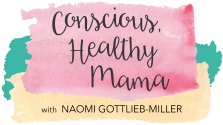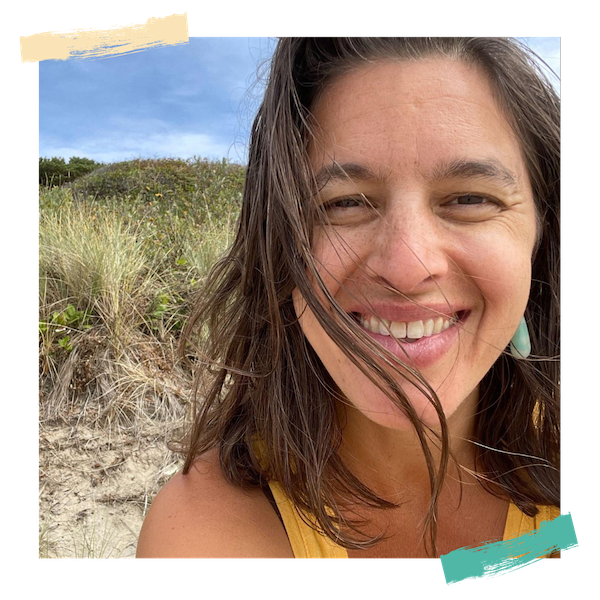Parenthood is a bit of a catch-22.
This is especially true if you decide to have a 2nd or a 3rd child. The thought is, “the first one wasn’t so bad. We survived. How much harder can a second child be?”
HAHAHAHAHAHAHAHA!
My laughter is echoing through the chambers of my memory that were blacked out as a result of extreme sleep deprivation, tears of frustration, and bouts of mental instability that occurred in the first 4 months of my daughter’s life.
Of course it’s harder. While there are things we might remember or know well from kid number 1, likely kid number 2 or 3 or 4 will be full of new surprises.
Every child is different.
Rationally, we know this.
Instinctively, we disregard it.
What we forget is that we are different, too. We are changed with parenthood. We are changed with each child. The differences and how we adapt to and through those differences is what we call growth. Or survival.
In parenthood and in life, too, we can’t really count on everything to stay the same. Some things might be familiar, but our experience of them will be different based on the child or the circumstances.
Yoga is like this, too.
Just when you think you’ve finally figured out a challenging pose, you get an injury and can’t practice it as easily or at all. Or you go to a yoga class and you’re magically able to do a pose you’ve never been able to do before. Or you are doing yoga at home and a pose you’ve always been able to do easily feels clumsy and extra hard.
Or you get pregnant, grow a baby, lose all contact with the muscles formerly known as your abs, and those arm balance transitions you worked so hard to accomplish are no longer accessible.
The message here is, “don’t get too comfortable or you will stop paying attention.”
Maybe it’s less about paying attention and more about being present on a day-to-day, minute-to-minute, moment-to-moment basis.
“Being present” is one of those catchphrases you hear a lot if you go to enough yoga classes. It’s so often invoked that I think it has lost some of its weight.
Being present isn’t just about paying attention to how your body feels in downdog instead of thinking about what is going to happen next on the next episode of “Scandal. “
Being present refers to a willingness to be in relationship with the many fluctuations that happen in your body, your mind, and your heart every single second of every single day.
It’s an exhausting endeavor, which is why we check out all the time.
And while I am pro- a little therapeutic escapism and engage in it daily, if everything we do is escapist then how can we possibly engage in the actual world we live in?
I think being present, as parents and yogis, simply asks us to acknowledge that no 2 children and no 2 yoga poses and no 2 experiences will ever be identical. No matter how practiced we are. No matter how familiar it feels. We are alive and imperfect and human and those 3 things in combination mean that there will always be something a little bit different in every moment.
In some ways the best metaphor for this is live theater. Even the most skillful and polished actor will deliver a different performance every night. No matter how hard she might try, there will be slight differences.
At the end of every show, the main actors still usually receive applause and often flowers. The performance is an experience that was made to only exist for the time that it existed. This also is part of what makes it beautiful. Flowers exist as temporary beauty in the same way. Bloom. Exist in the moment. Gone. We still give them and still appreciate them, though, despite the fact that they are so fragile and so temporary.
All we can hope for is to create conscious experiences and conscious actions.
I teach this idea to the mamas who go through my Conscious Healthy Mama program when it comes to habit change. We want to believe that if we set a new habit in motion that because we want it so badly, we can make it stick and be consistently successful every single day.
And while some habits will stick more easily than others, some habits will fluctuate based on the circumstances of your life.
So here are my top tips for navigating healthy habit change and creating conscious experiences by being present:
1. Keep your expectations reasonable.
It took a long time for me to regain my abs after my first pregnancy. I eventually became stronger and more capable in some of the more challenging-for-me yoga poses than I was before my daughter was born. Knowing this, I can expect something similar, although not exact to be the case.
Instead of getting angry or giving up, I need to keep working at those poses and transitions regularly, just as I did before. If I expect to suddenly be able to do a handstand without a wall for support 3 months postpartum, I am forgetting how long it took me in the first place. Circumstances are different now.
This is not about aiming low or not believing in myself. This is about being aware and present of where I am now AND as I move forward.
2. Be a good observer.
Notice when things work and when they don’t. Try to keep judgment out of this. You’re not a bad person if you’re trying to eat healthier but you just can’t stop snacking late at night.
Notice WHY you are doing this. What is triggering the late night snacking? How does it make you feel, both physically and emotionally? Is it the same every time? Do you want to stop or are you ok with what you are doing, as well as the outcome? Again, no “I am a good person” or “I am a bad person” judgment here. Be a scientist about it. Ask questions that will give you clear answers. Then take actions on those answers that support what you want.
3. Explore your options.
Not every tactic works for every habit, yoga pose, or person. Recently when Milly was doing something that she wasn’t supposed to, I got upset and asked her to explain why she did what she had done. I know…a silly thing to ask a 3 year old to explain herself, but sometimes parenting reactions are illogical and fueled by primal rage and exhaustion. Milly said, “I don’t want to talk to you right now,” which enraged me further.
Then Nathan said, “she might be like me and when she gets frustrated or upset, she doesn’t want to talk about it or she can’t. It might be overwhelming to her to try and talk right now.”
He had a good point. It changed my perspective and has shifted how I engage with Milly when she’s done something that’s not ok and I’m angry. I’m still figuring out the best way to handle it, but the perspective Nathan offered was really insightful. Go figure.
A new approach to a familiar experience might bear results that are more positive than the old, comfortable approach. You might be very uncomfortable, but often discomfort allows you to be more present.
4. Be patient.
This is the hardest, but most valuable nonetheless.
Sometimes you have to try lots of different things before something works. Sometimes you find something that feels right but it doesn’t work right away. So you have to stick with it, despite the difficulty or discomfort (see above), because you know that in the long run, you will experience success.
Another way to look at it is that because we are always different, our ability to accomplish our goals (or yoga poses or parenting success) is relative. So we have ups and downs. It’s a wave. Flow in. Flow out. This cycles you right back up to the first 3 tips. Keep your expectations realistic, then observe your experience as objectively as possible, and shift gears as needed. Then be patient again.
Remember that these are lifelong endeavors. There will be ups and downs. There will be great successes and frustrating failures. If we can stay present with ourselves, we have a greater opportunity to experience steady growth, regular transformation, and deep appreciation for the process it takes to get there.
NoW go buy yourself some flowers.



